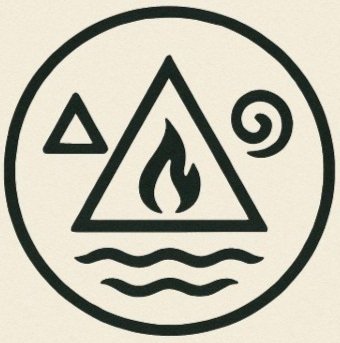Unleashing the Wild Within: The Call to Undomesticate Your Life
In the quiet spaces of longing, between the ticking clock and the daily to-do lists, something stirs. A whisper in the soul. A restlessness. A hunger not for more achievement, but for more aliveness. If you’ve ever found yourself wondering “Is this all there is?”, you’re not alone.
This is the call of undomestication — the sacred journey of shedding the layers we’ve worn to survive, and stepping into the raw, untamed truth of who we really are.
The Cage Is Inside Us
Undomestication is not about moving to the woods or renouncing all responsibilities — unless your soul demands it. It’s about deconstructing the inner cage: the beliefs, stories, and wounds that cause us to play small and live for approval.
It’s about recognizing how we’ve been trained to seek worth in external success, instead of rooting into the deep knowing that we are already whole.
As spiritual teacher Charles Eisenstein says, “The more beautiful world our hearts know is possible begins with the courage to feel deeply again.”
Inspiration for the Journey
Many modern mystics and seekers are echoing the call to undomesticate:
Clarissa Pinkola Estés, in “Women Who Run with the Wolves”, speaks of the “wild woman archetype” as the essence of feminine intuition and soul instinct that we’ve forgotten but can remember.
Bayo Akomolafe invites us to slow down, get messy, and embrace the sacred uncertainty that lies outside the neatly ordered boxes of modern life.
Alan Watts reminds us that “trying to define yourself is like trying to bite your own teeth." Who we are is not an identity to perform, but an essence to embody.
What is Undomestication?
Ren Hurst, in her powerful work “The Wisdom of Wildness”, speaks to undomestication not as a rejection of civilization, but as a radical return to our authentic nature. She writes not only from the perspective of a former horse trainer but from someone who intimately explored the energetic and emotional contracts that keep both animals — and humans — bound in systems of control.
To domesticate is to tame. To make something-or someone—behave.
We’ve been taught to behave:
To sit quietly when we want to scream.
To pursue stability when our spirit aches to roam.
To appear polished when we’re falling apart.
But this “taming” comes at a cost: our authenticity, vitality, and wild soul.
What Does It Look Like to Undomesticate?
Saying “no” to what drains you, even if it pleases others.
Choosing rest when the world glorifies productivity.
Allow your voice, art, body, and choices to be honest, even if they don’t fit the mold.
Letting your emotions speak, without shame or suppression.
Reclaiming intuition as truth, and listening to it above the noise.
This is the path of the Seeking Yogini — not one who conforms to the image of serenity, but one who dares to question, feel, fall apart, and come home to herself again and again.
The Return to Self
Undomestication is not the destination — it’s the unlearning, the peeling back, the remembering.
It is sitting on the earth barefoot, not for a photo, but to feel what it means to be alive.
It is the moment you catch your reflection in the mirror and smile, not because you look perfect, but because you see your truth.
It is the willingness to grieve the life you thought you were supposed to live — and the courage to birth the one your soul has been aching for all along.
So if you're reading this and feel a spark — follow it.
That quiet pulse of aliveness is your wildness calling.
You are not here to be tamed.
You are here to become.
Welcome home.






